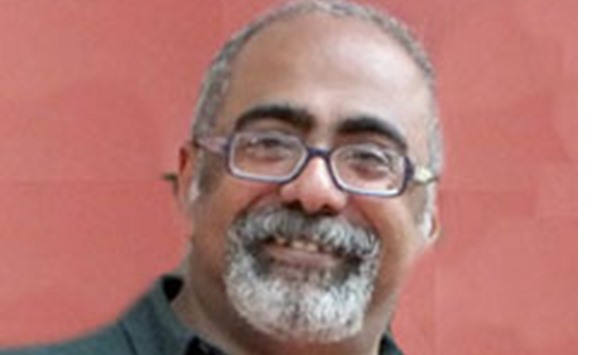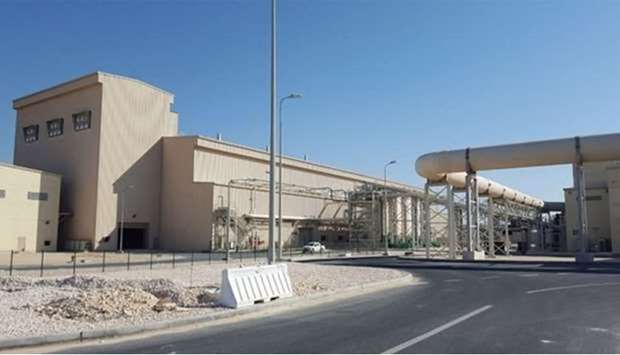Qatar, which uses the most modern membrane ultra-filtration system to recycle the treated wastewater, has seen a robust year-on-year expansion in the use of treated wastewater in irrigation of green spaces this January, according to the Planning and Statistics Authority (PSA) data.
Qatar's treated wastewater stood at 21.61mn cubic metres out of 21.79mn cubic metres of wastewater received in January this year, the PSA said.
Ashghal operates a number of wastewater treatment plants throughout the country and the improvement in wastewater treatment technologies were the reason behind the large increase in the wastewater treatment capacity.
Doha North Sewage Treatment Works, a significant sewage treatment project being undertaken by Ashghal, utilises treated wastewater from the project for irrigation and other non-potable purposes, while the sludge from the treatment plant is used as soil conditioner in the neighbouring agriculture fields and as a source of green energy, according to reports.
The treated wastewater, nonetheless, witnessed a 9.5% and 3.4% decline year-on-year and month-on-month respectively in the review period.
The treated wastewater reused for irrigation of green spaces witnessed 55.9% year-on-year surge to 7.15mn cubic meters, which accounted for 33% of the total treated wastewater.
On a monthly basis, the reuse of treated wastewater for irrigation of green spaces saw a 2.5% increase.
The treated wastewater reused in agriculture amounted to 6.41mn cubic meters, which accounted for 30% of the total treated wastewater this January. The reuse in the farm sector nevertheless witnessed a 13.9% and 7.9% fall year-on-year and month-on-month respectively in the review period.
Mahaseel for Marketing and Agri Services Company (a subsidiary of Hassad) has marketed 10mn kg of locally produced vegetables in the Qatari market, since January 2021. This figure is double the amount, which was marketed during the same period last year.
The reuse of treated wastewater for agriculture hints at the hydrocarbons-rich country's green initiatives, a key parameter of sustainable development.
The treated wastewater reused in deep injection into aquifers amounted to 6.3mn cubic metres, which accounted for 29% of the total treated wastewater in January 2021. Such reuse, nevertheless, declined 12.8% and 8.9% respectively in the review period.
The treated wastewater discharged into lagoons in January this year stood at 1.74mn cubic meters or 8% of the total treated wastewater reused. The discharge saw a 61.9% fall on a yearly basis but grew 4.5% month-on-month.
There was no discharge of treated wastewater into sea in January 2021.
The PSA bulletin said the water produced was 51.25mn cubic meters, declining 4% year-on-year in January 2021; while consumption rose slower at 3.6% to 50.21mn cubic metres.
Qatar's treated wastewater stood at 21.61mn cubic metres out of 21.79mn cubic metres of wastewater received in January this year, the PSA said.
Ashghal operates a number of wastewater treatment plants throughout the country and the improvement in wastewater treatment technologies were the reason behind the large increase in the wastewater treatment capacity.
Doha North Sewage Treatment Works, a significant sewage treatment project being undertaken by Ashghal, utilises treated wastewater from the project for irrigation and other non-potable purposes, while the sludge from the treatment plant is used as soil conditioner in the neighbouring agriculture fields and as a source of green energy, according to reports.
The treated wastewater, nonetheless, witnessed a 9.5% and 3.4% decline year-on-year and month-on-month respectively in the review period.
The treated wastewater reused for irrigation of green spaces witnessed 55.9% year-on-year surge to 7.15mn cubic meters, which accounted for 33% of the total treated wastewater.
On a monthly basis, the reuse of treated wastewater for irrigation of green spaces saw a 2.5% increase.
The treated wastewater reused in agriculture amounted to 6.41mn cubic meters, which accounted for 30% of the total treated wastewater this January. The reuse in the farm sector nevertheless witnessed a 13.9% and 7.9% fall year-on-year and month-on-month respectively in the review period.
Mahaseel for Marketing and Agri Services Company (a subsidiary of Hassad) has marketed 10mn kg of locally produced vegetables in the Qatari market, since January 2021. This figure is double the amount, which was marketed during the same period last year.
The reuse of treated wastewater for agriculture hints at the hydrocarbons-rich country's green initiatives, a key parameter of sustainable development.
The treated wastewater reused in deep injection into aquifers amounted to 6.3mn cubic metres, which accounted for 29% of the total treated wastewater in January 2021. Such reuse, nevertheless, declined 12.8% and 8.9% respectively in the review period.
The treated wastewater discharged into lagoons in January this year stood at 1.74mn cubic meters or 8% of the total treated wastewater reused. The discharge saw a 61.9% fall on a yearly basis but grew 4.5% month-on-month.
There was no discharge of treated wastewater into sea in January 2021.
The PSA bulletin said the water produced was 51.25mn cubic meters, declining 4% year-on-year in January 2021; while consumption rose slower at 3.6% to 50.21mn cubic metres.




